Teaching young children how to use their hands for kindness rather than harm is foundational to building a caring classroom culture. At ages four and five, children are still developing self-regulation and may act out physically when emotions feel overwhelming. As educators, we can guide them toward prosocial alternatives, equip them with emotional vocabulary, and partner with families to reinforce healthy touch at home.
Understanding Physical Interactions at Age 4–5
Children in this age group often express big feelings through pushing, hitting, or grabbing because they lack more nuanced self-control skills. They may also be testing boundaries or reacting impulsively in social play. Recognizing hitting as a developmental signal rather than deliberate misbehavior allows us to respond with empathy and targeted teaching.
Building Emotional Literacy
Helping children name and monitor their feelings is key to preventing physical outbursts.
- Create an Emotion Charades activity where children act out anger, frustration, or excitement, then label each emotion together.
- Introduce a Feelings Thermometer with visuals ranging from “calm” to “boiling” so children can point to how they feel.
- Establish a Safe Space Corner stocked with sensory tools (smash balls, soft pillows, and emotion cards) where a child can go when they sense they’re losing control.
Reinforcing Consent and Boundaries
Teaching personal boundaries early fosters respect for self and others.
- Role-play common scenarios using puppets or dolls (“I want that toy,” “Can I hug you?”) and practice assertive phrases such as “Stop, I don’t like that” or “Yes, you may.”
- Use a Body Bubble Game: mark circles on the floor or use hula hoops to visualize personal space and have children practice asking to enter another’s bubble.
- Display a My Body, My Rules poster with child-friendly reminders to ask permission for hugs, high-fives, or shared materials.
Creative Classroom Activities
Embedding lessons through play and art makes prosocial skills memorable.
- Kindness Chain: Each time a child uses gentle hands or kind words, they add a paper link. Celebrate milestones when the chain grows long.
- Helping Hands Wall: Children trace one of their hands, decorate it, and write or draw a way they’ve helped someone today.
- Shared Drawing: Pair children to co-create art, emphasizing turn-taking, gentle touch of shared materials, and negotiation of space.
Engaging Families as Partners
Consistency between home and school amplifies learning.
- Send Neutral Incident Notes: Use factual, non-blaming language (for example, “Today during block play, Sam and Lee both wanted the red block. We practiced taking turns and using gentle hands.”).
- Provide a Parent Info Sheet outlining your classroom approach to boundaries, with simple tips like “Ask your child to show you calm hands when they’re upset.”
- Share Home-School Dialogue Prompts such as “What kind of thing did you do with your hands today?” to spark conversation about prosocial choices.
Reflecting and Monitoring Progress
Tracking moments of challenge and success helps refine your strategies.
- Use a Micro-Moment Reflection Tool: For each boundary-related incident, note the trigger, response strategy used, and child’s reaction to guide next steps.
- Hold brief Team Huddles with educators to share observations, brainstorm adjustments, and celebrate wins—no matter how small.
- Review children’s progress monthly and adjust your classroom visuals or activities based on common patterns (for example, more calm-down prompts if hitting spikes).
Cultivating prosocial behaviors and respectful touch in young children takes consistency, creativity, and genuine partnership with families. By building emotional literacy, reinforcing consent, embedding playful activities, and monitoring outcomes, educators create a classroom where all children feel safe, understood, and empowered to use their hands for helping. The ripple effects of these practices extend far beyond the early years, shaping empathetic, self-regulated individuals.
Further Reading
Descriptive Words For Children's Behaviour
Behaviour Management In Childcare
Stages Of Behaviour
Redirecting Children's Behaviour
Supporting Children With Challenging Behaviour
Calm Down Box For Children
Calm Down Techniques For Overresponsive Children
10 Strategies To Handle An Angry Child


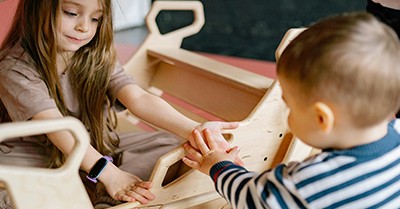




 Open ended questions cannot be responded to with one word answers such as yes or no. These types of questions enables a child to provide
Open ended questions cannot be responded to with one word answers such as yes or no. These types of questions enables a child to provide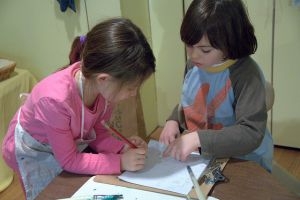 During your child’s preschool years, an important milestone begins to emerge. This is the development of pre-writing skills. Pre-writing skills are used to encourage, develop
During your child’s preschool years, an important milestone begins to emerge. This is the development of pre-writing skills. Pre-writing skills are used to encourage, develop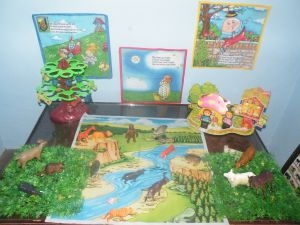 Open ended materials enables children to play freely. They are objects that have no rules to follow, use or function. Raw materials that can be
Open ended materials enables children to play freely. They are objects that have no rules to follow, use or function. Raw materials that can be An Acknowledgment of the Country is a way of showing respect for the Traditional Owners and can be given by both non-Indigenous people and Aboriginal
An Acknowledgment of the Country is a way of showing respect for the Traditional Owners and can be given by both non-Indigenous people and Aboriginal Language plays an important role in a child’s development. It enables a child to communicate effectively with their family, learn at school, socialize with friends,
Language plays an important role in a child’s development. It enables a child to communicate effectively with their family, learn at school, socialize with friends,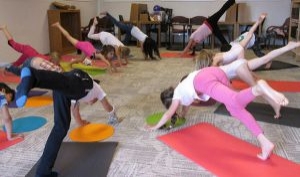 Like adults, children have to deal with their own stress in life. Moving house, starting a new school, preparing for a new sibling - these are
Like adults, children have to deal with their own stress in life. Moving house, starting a new school, preparing for a new sibling - these are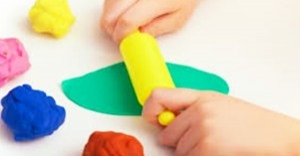 Playdough is such a versatile material. It provides numerous benefits to children as they manipulate it, it is safe and soothing and provides children with
Playdough is such a versatile material. It provides numerous benefits to children as they manipulate it, it is safe and soothing and provides children with Teaching children about sustainability enables them to appreciate and respect the natural environment. Early childhood services can provide meaningful hand on learning experiences in order
Teaching children about sustainability enables them to appreciate and respect the natural environment. Early childhood services can provide meaningful hand on learning experiences in order Recycling is an important concept that teaches children to care for the environment. It encourages children to be responsible and show a growing appreciating for
Recycling is an important concept that teaches children to care for the environment. It encourages children to be responsible and show a growing appreciating for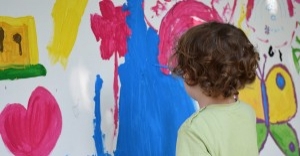 When children apply paint to paper, glue things together, or pound a lump of clay, they experiment with colour, shape design and texture.
When children apply paint to paper, glue things together, or pound a lump of clay, they experiment with colour, shape design and texture.



